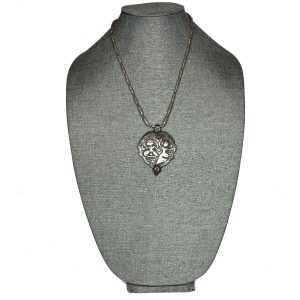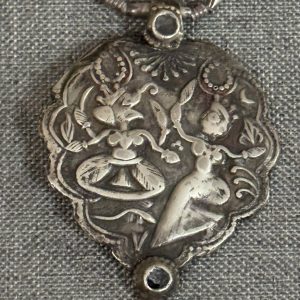Antique Silver Ganesh Pendant with Four Arms and Sweets #22043BLE
Original price was: $395.00.$325.00Current price is: $325.00.Ht: 5.125″ W: 3.75″ D: 0.625″ | FREE SHIPPING within continental U.S.
This vintage massive, heavy silver pendant represents a four armed Ganesh seated within a betel shape frame wearing a crown and reaching for modak, a rice flour sweet dumpling filled with coconut that is his favorite treat. Ganesh pendants are worn for good luck as he is the God who removes the obstacles in devotees’ lives. The coin silver chain is included.




